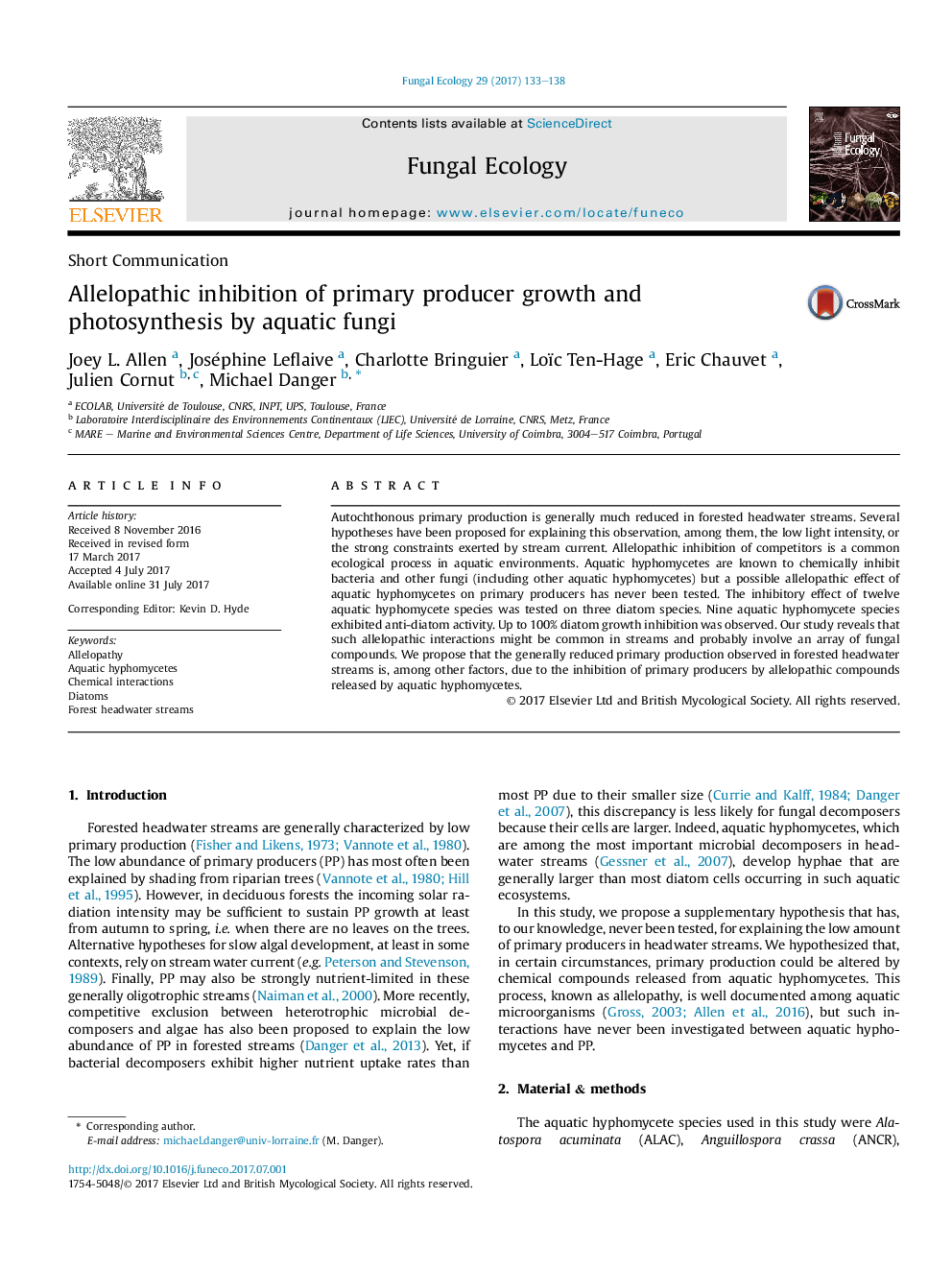| Article ID | Journal | Published Year | Pages | File Type |
|---|---|---|---|---|
| 5517610 | Fungal Ecology | 2017 | 6 Pages |
Autochthonous primary production is generally much reduced in forested headwater streams. Several hypotheses have been proposed for explaining this observation, among them, the low light intensity, or the strong constraints exerted by stream current. Allelopathic inhibition of competitors is a common ecological process in aquatic environments. Aquatic hyphomycetes are known to chemically inhibit bacteria and other fungi (including other aquatic hyphomycetes) but a possible allelopathic effect of aquatic hyphomycetes on primary producers has never been tested. The inhibitory effect of twelve aquatic hyphomycete species was tested on three diatom species. Nine aquatic hyphomycete species exhibited anti-diatom activity. Up to 100% diatom growth inhibition was observed. Our study reveals that such allelopathic interactions might be common in streams and probably involve an array of fungal compounds. We propose that the generally reduced primary production observed in forested headwater streams is, among other factors, due to the inhibition of primary producers by allelopathic compounds released by aquatic hyphomycetes.
